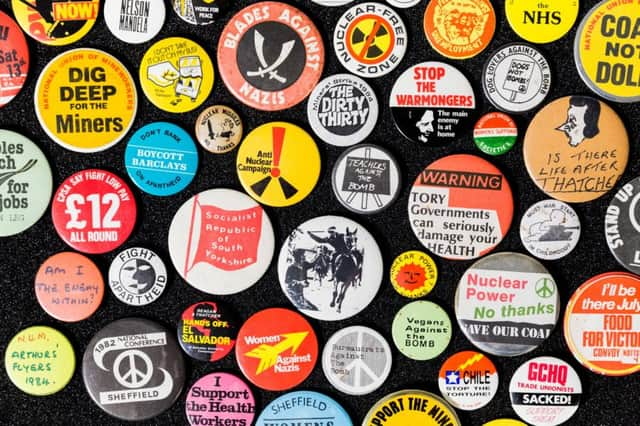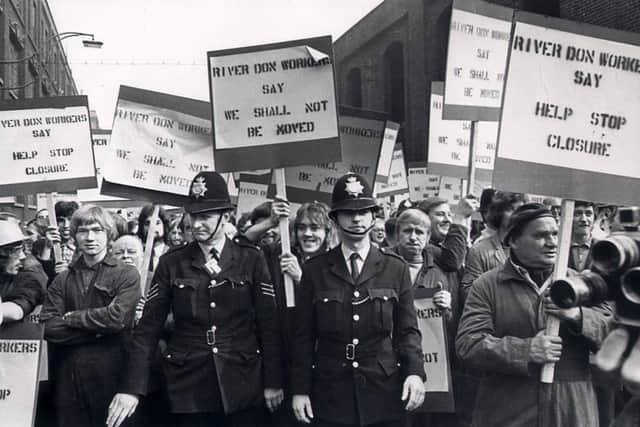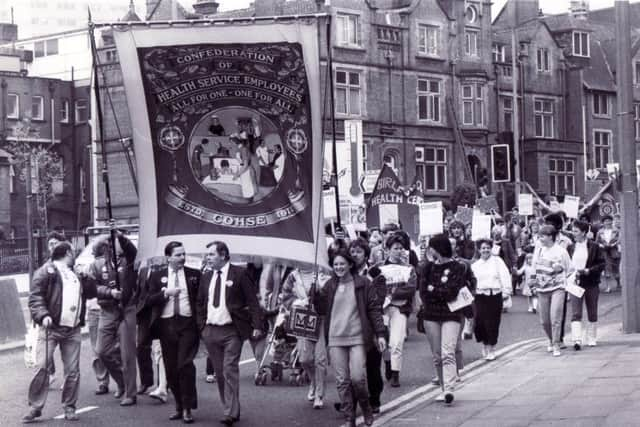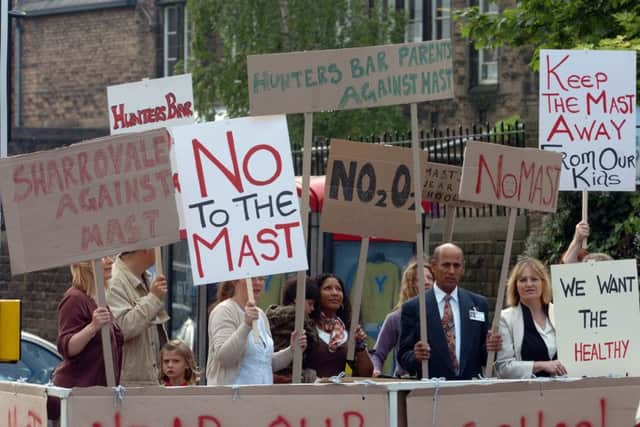Rebels with an eternal cause


Sheffield protest – the focus of a newly launched city project celebrating “people power” – was at its angriest on the evening Margaret Thatcher came to dinner back in the early Eighties. She was guest of honour at the Cutlers’ Feast, a best-bib-and-tucker beanfeast for industrialists and businessmen. An “Unwelcoming Committee” was duly organised to greet her and around 5,000 protesters turned out with “Stop Thatcher’s Carve-Up” banners. A thousand policemen were ranged four-deep in front of crowd barriers as the Prime Minister strode from her car into the Cutlers’ Hall.
The protesters shouted and jeered and someone hurled an egg, which splattered on the carpet in front of her. One white-tie-and-tailed industrialist turned to another. “They must be awfully well-off if they can afford to throw eggs at the price they are today,” he reportedly said.
Advertisement
Hide AdAdvertisement
Hide AdThe Iron Lady features, fearsomely, on a pair of Spitting Image slippers on show at Sheffield’s Millennium Gallery (she’s tucked up in bed on the right foot; Neil Kinnock is on the left one, looking rather crazed). They’re part of Protest Lab, the exhibition that launches Protest and Activism, a two-year project to explore and document the city’s history of radical dissent.


As well as banners, T-shirts and songsheets, there’s an impressive array of brighter-than-bright badges. Their slogans echo down the decades: Coal Not Dole; Dig Deep for the Miners; Nuclear Power – No Thanks; Boycott Barclays. Plus, for more specialised tastes, Vegans Against the Bomb and Dog-Lovers Against the Bomb.
In Seventies and Eighties Sheffield, you could hardly avoid these protests. If a weekend was looming without a march or rally scheduled, someone would probably organise a demo to protest about it.
“My gut feeling is that Sheffield has a bigger history of protest than many other places in Yorkshire, and Sheffielders are very proud of it,” says project curator Louisa Briggs. “But we’ve realised that the city’s museum collections don’t reflect that.”
Advertisement
Hide AdAdvertisement
Hide AdThere’s very little relating to the peace movement, for instance, or the miners’ and steelworkers’ strikes, or black and LGBT rights. So Briggs is appealing for memorabilia to fill the gaps. Among donations so far are a loudhailer, a collection bucket from the miners’ strike and various souvenirs of the Sheffield Street Band, without whose rousing, insistent sounds no demo was complete.


“But we don’t have anything relating to the Suffragettes, despite their strong presence in Sheffield,” says Briggs. “And they were quite canny at creating fundraising merchandise.”
Perhaps their most ingenious creation was the Pank-a-Squith board game, an Edwardian political snakes-and-ladders whose name was inspired by the Pankhurst family (prominent Suffragettes) and HH Asquith (anti-Suffragette prime minister). The aim of the spiralling game – which Briggs would dearly love to acquire – was to reach the Houses of Parliament. Along the way, you could be chained to railings, hurl stones through Home Office windows and go to jail.
Protest Lab is also a chance for visitors to share their own memories and opinions. There’s plenty to go at – the Orgreave confrontations between miners and police, local delegations to the Greenham Common peace camp, Women Against Pit Closures, the People’s March for Jobs, the Poll Tax controversy.
Advertisement
Hide AdAdvertisement
Hide AdIn the Eighties, Sheffield was famously dubbed the capital of the Socialist Republic of South Yorkshire. It declared itself a nuclear-free zone and hoisted the Red Flag over the Town Hall on May Day. Councillors aligned themselves with international working class “struggle” and, one novel Wednesday afternoon, launched a three-hour debate about goldfish rights. It led to a ban on the fish being offered as fairground prizes. Was this loony or enlightened?


Debate it for three hours of your own.
The old activist spirit survives today. Over the past few months, the city has seen public protests about the chopping down of its roadside trees, Donald Trump’s policies and, in a quieter way, the decision to appoint a Bishop of Sheffield opposed to the ordination of women (he subsequently withdrew from the job).
The Protest and Activism project, funded by the Esmée Fairbairn Foundation charity, will be marking next year’s centenary of the Representation of the People Act which guaranteed the vote to all men over 21 and some women over 30 – an important step towards rights that we now take for granted.
It realised some of the political ideals of the 19th century Chartist movement, which campaigned for the working class to be given the vote. One of its great heroes, Samuel Holberry, worked in Sheffield and is buried in the city’s General Cemetery. His funeral procession in 1842 was lined by an estimated 50,000 people.


Advertisement
Hide AdAdvertisement
Hide AdHolberry died of consumption in York prison at “the early age of 27”, as his much-visited gravestone laments, “for advocating what to him appeared to be the true interest of the people of England”. That “true interest” involved a people’s uprising described in court as “seditious conspiracy”.
The same term was used at the trial of Louisa Briggs’ own great-great-great-great-uncle, a Chartist who took part in an uprising in Newport, which inspired the Sheffield one. He was sentenced to two years’ hard labour and died in his early thirties.
“He’s a family hero,” says Briggs. “And what’s been fascinating in this project is to come across so many people who have stood up for what they believed in, at whatever cost to themselves.”
The project will explore protest’s capacity to effect change and the philosophy behind protest votes, seen most recently with Brexit and Trump. How many people voted to leave the EU as a protest against Tory policies, little expecting the final outcome? How many people voted for Trump as a protest against what they perceived as a political elite?
Advertisement
Hide AdAdvertisement
Hide Ad“I’ve had a lot of conversations with people who’ve said: ‘What’s the point of protesting? Stop the War didn’t come to anything,’” says Briggs. “But there’s a need to keep on fighting, because if you don’t, you don’t change anything.”
Exhibition visitors will be invited to drop their thoughts about such issues into a ballot box, along with contact details if they want to share stories or suggest particular campaigns for the project to cover. They’ll also be encouraged to suggest their own slogans.


What do we want? A Pank-a-Squith board game! When do we want it? Well, whenever’s convenient really...
■ Protest Lab continues at the Millennium Gallery, Arundel Gate, Sheffield (0114 278 2600, museums-sheffield.org.uk) until May 21. Admission is free. For more information about the exhibition call Louisa Briggs on 0114 278 2754 or email [email protected].